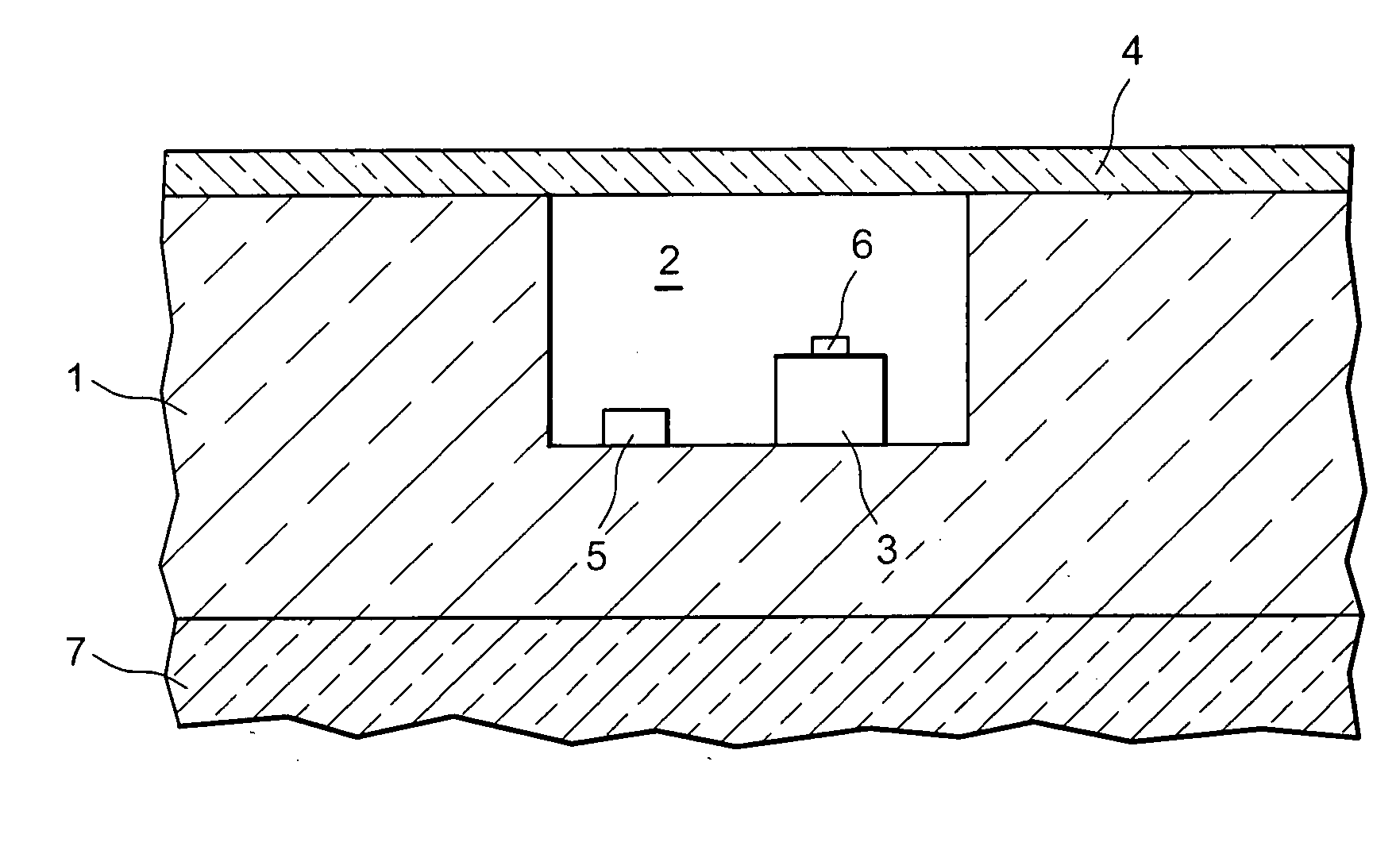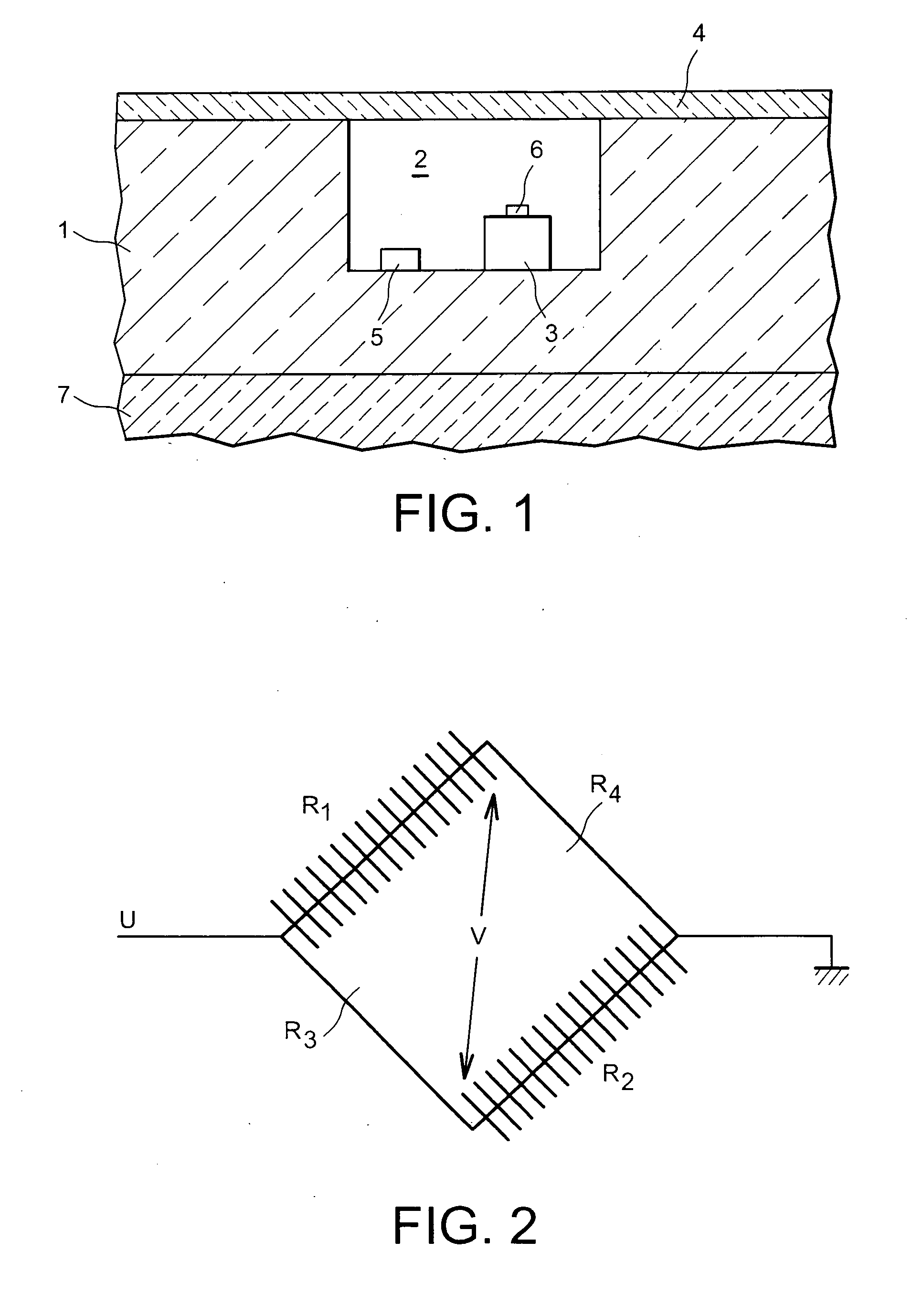Tightness Test for Mems or for Small Encapsulated Components
a technology of encapsulation and tightness, which is applied in the direction of microstructural devices, microstructural technology, material thermal analysis, etc., can solve the problems of complex method, cumbersome tightness of mems or small devices, and difficult reproducibility
- Summary
- Abstract
- Description
- Claims
- Application Information
AI Technical Summary
Benefits of technology
Problems solved by technology
Method used
Image
Examples
Embodiment Construction
[0014] To overcome the disadvantages of the prior art, the present invention proposes the incorporation of a simplified detector within the cavity to detect gas density, inspired from Pirani-type pressure sensors and using the same techniques and / or methods as those designed and optimized for the main function of the MEMS or small device. For this purpose, use is made of the fact that when the mean free path of molecules is no longer very small compared with the dimensional characteristic of gas thickness, a temperature jump occurs in the vicinity of a heat-exchanging wall as modelled over one century ago by von Smoluchowski (1898) as: Tgas-Twall=2-σTσT·2 γγ+1·LPr·∇->Tgas*n->
wherein
[0015]σT: coefficient of thermal accommodation, between 0 and 1, dependent on the surface properties and type of gas. It is often taken to be in the order of 0.75 to 1.
[0016]γ=Cp / Cv: isentropic coefficient of the gas, typically in the order of 1.4 for a diatomic gas.
[0017] Pr: number of Pran...
PUM
| Property | Measurement | Unit |
|---|---|---|
| pressures | aaaaa | aaaaa |
| pressures | aaaaa | aaaaa |
| pressures | aaaaa | aaaaa |
Abstract
Description
Claims
Application Information
 Login to View More
Login to View More - R&D
- Intellectual Property
- Life Sciences
- Materials
- Tech Scout
- Unparalleled Data Quality
- Higher Quality Content
- 60% Fewer Hallucinations
Browse by: Latest US Patents, China's latest patents, Technical Efficacy Thesaurus, Application Domain, Technology Topic, Popular Technical Reports.
© 2025 PatSnap. All rights reserved.Legal|Privacy policy|Modern Slavery Act Transparency Statement|Sitemap|About US| Contact US: help@patsnap.com



